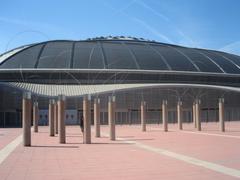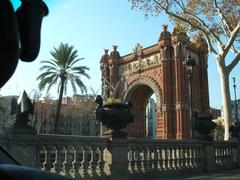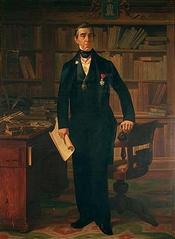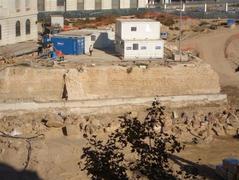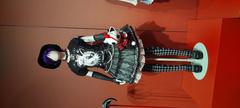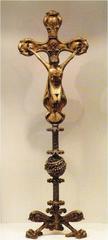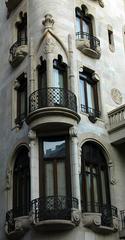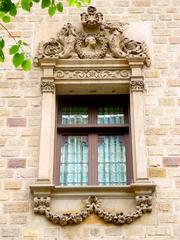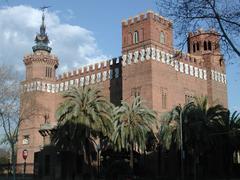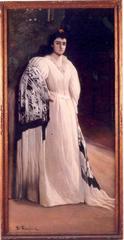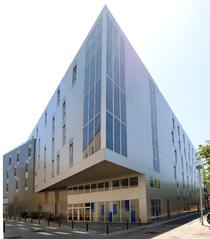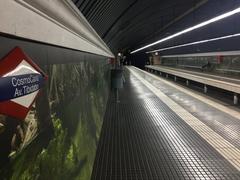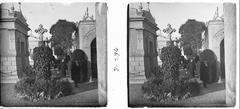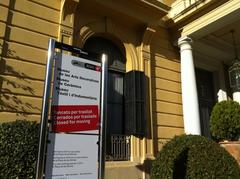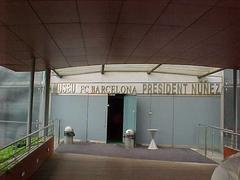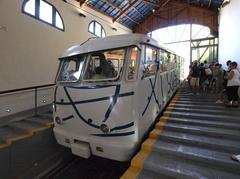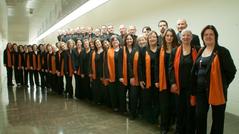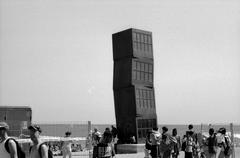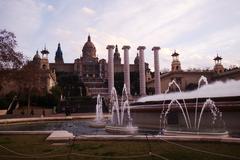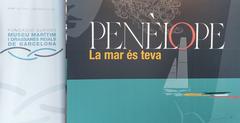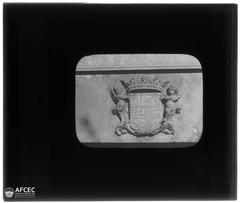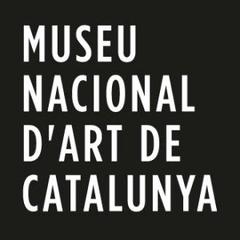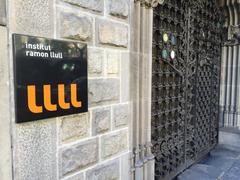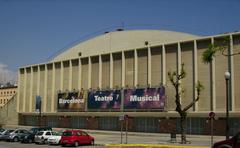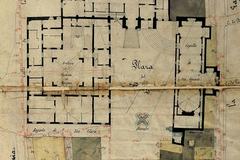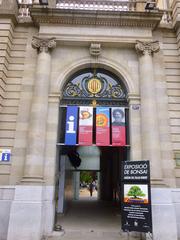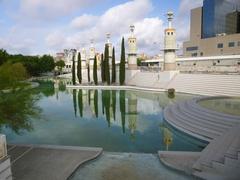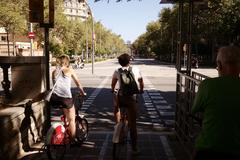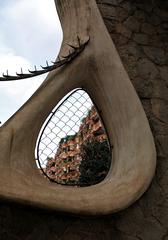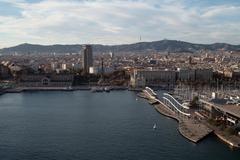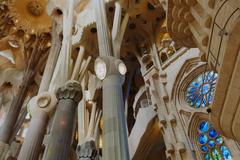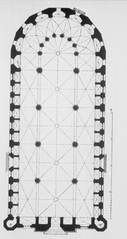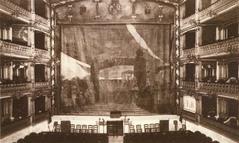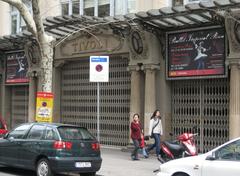
Visiting Avinguda de Miramar in Barcelona: Hours, Tickets, and Tips
Date: 17/07/2024
Introduction
Avinguda de Miramar, nestled on the scenic Montjuïc Hill in Barcelona, is a testament to the city’s rich historical and cultural tapestry. Initially developed as part of the 1929 Barcelona International Exposition, this avenue has been a pivotal part of Barcelona’s urban and cultural evolution. The exposition aimed to highlight Spain’s industrial and artistic prowess, with Montjuïc chosen for its strategic location and panoramic views of the city and the Mediterranean Sea. Over the decades, Avinguda de Miramar has transformed from a central thoroughfare for international exhibitions to a vibrant cultural hub, offering a blend of historical landmarks, modern attractions, and breathtaking vistas (Barcelona International Exposition). The avenue’s significance was further cemented during the 1992 Summer Olympics, which spurred extensive urban renewal projects and showcased Barcelona to a global audience (1992 Summer Olympics). Today, Avinguda de Miramar remains a must-visit destination for those seeking to explore Barcelona’s architectural splendor, cultural heritage, and scenic beauty.
Table of Contents
- Origins and Early Development
- 1992 Barcelona Olympics
- Modern-Day Significance
- Visitor Information
- Seasonal Events and Activities
- Frequently Asked Questions (FAQ)
- References
Origins and Early Development
Avinguda de Miramar, located in the Montjuïc area of Barcelona, boasts a rich history dating back to the early 20th century. Initially developed as part of the urbanization efforts for the 1929 Barcelona International Exposition, this avenue has significantly influenced the city’s architectural and cultural landscape. The exposition aimed to showcase Spain’s industrial and artistic achievements, and Montjuïc was chosen as the primary site due to its strategic location and panoramic views of the city and the Mediterranean Sea.
1929 Barcelona International Exposition
The 1929 International Exposition was a pivotal event in Barcelona’s history, and Avinguda de Miramar played a crucial role in its success. The avenue was designed to connect various exhibition pavilions and cultural landmarks, facilitating the movement of visitors and dignitaries. Notable structures along Avinguda de Miramar include the Palau Nacional, which now houses the National Art Museum of Catalonia (MNAC), and the Magic Fountain of Montjuïc, a popular attraction known for its nightly light and music shows. The exposition not only boosted Barcelona’s international profile but also led to significant urban development and modernization efforts (Barcelona International Exposition).
Post-Exposition Era and Urban Development
Following the success of the 1929 exposition, Avinguda de Miramar continued to evolve as a key thoroughfare in Montjuïc. The avenue underwent several phases of development and renovation to accommodate the growing number of visitors and to enhance its aesthetic appeal. During the mid-20th century, additional cultural and recreational facilities were established along the avenue, including the Montjuïc Cable Car, which offers stunning views of the city and the sea. The cable car system, inaugurated in 1970, connects Avinguda de Miramar with the Montjuïc Castle, a historic fortress that dates back to the 17th century (Montjuïc Cable Car).
1992 Barcelona Olympics
The 1992 Summer Olympics marked another significant chapter in the history of Avinguda de Miramar. Barcelona underwent extensive urban renewal projects in preparation for the games, and Montjuïc was once again at the center of these efforts. The avenue was upgraded to improve accessibility and to accommodate the influx of athletes, officials, and spectators. Key Olympic venues, such as the Estadi Olímpic Lluís Companys and the Palau Sant Jordi, are located in close proximity to Avinguda de Miramar. The successful hosting of the Olympics not only revitalized the area but also cemented Barcelona’s reputation as a global city (1992 Summer Olympics).
Modern-Day Significance
Today, Avinguda de Miramar remains a vital part of Barcelona’s cultural and recreational landscape. The avenue is lined with lush gardens, scenic viewpoints, and a variety of attractions that draw both locals and tourists. The Jardins de Miramar, for instance, offer a tranquil escape with beautifully landscaped gardens and panoramic views of the city. Additionally, the avenue is home to several museums and cultural institutions, such as the Joan Miró Foundation, which showcases the works of the renowned Catalan artist (Joan Miró Foundation).
Architectural and Cultural Heritage
Avinguda de Miramar is not only a hub of cultural activity but also a testament to Barcelona’s architectural heritage. The avenue features a blend of historic and modernist architecture, reflecting the city’s dynamic evolution over the past century. The Palau Nacional, with its grandiose façade and intricate detailing, is a prime example of the architectural splendor that characterizes the area. The building, designed by architects Eugenio Cendoya and Enric Catà, was constructed for the 1929 exposition and now serves as a symbol of Catalan art and history (Palau Nacional).
Visitor Information
Getting There
Avinguda de Miramar is easily accessible by various modes of transportation:
- Metro: The nearest metro station is Paral·lel (Lines L2 and L3). From there, you can take the Funicular de Montjuïc, which connects directly to the avenue.
- Bus: Several bus lines, including 55 and 150, serve the Montjuïc area. The 150 bus route is particularly convenient as it stops at various attractions along Avinguda de Miramar.
- Cable Car: The Montjuïc Cable Car offers a scenic route to the avenue, providing panoramic views of the city and the Mediterranean Sea. The cable car station is located near the Funicular de Montjuïc.
- Walking: For those who enjoy walking, the avenue can be reached by a pleasant hike up Montjuïc Hill, offering beautiful views and a chance to explore the surrounding parks and gardens.
Best Time to Visit
The best time to visit Avinguda de Miramar is during the spring (April to June) and fall (September to November) when the weather is mild and pleasant. Summer months can be hot and crowded, while winter is cooler but still enjoyable due to Barcelona’s generally mild climate.
Attractions Along Avinguda de Miramar
Avinguda de Miramar is home to several notable attractions:
- Montjuïc Castle: This historic fortress offers stunning views of the city and the sea. It also houses a military museum and hosts various cultural events throughout the year. More information can be found on the official website.
- Joan Miró Foundation: Dedicated to the works of the famous Catalan artist Joan Miró, this museum features a vast collection of his paintings, sculptures, and drawings. Visit the Joan Miró Foundation website for details on exhibitions and opening hours.
- Montjuïc Cable Car: This cable car ride offers breathtaking views of Barcelona and the Mediterranean. It connects the lower part of Montjuïc with the castle at the top. Tickets and schedules are available on the official website.
Practical Information
Opening Hours
- Montjuïc Castle: Open daily from 10:00 AM to 8:00 PM in summer (April to September) and from 10:00 AM to 6:00 PM in winter (October to March).
- Joan Miró Foundation: Open Tuesday to Sunday from 10:00 AM to 6:00 PM. Closed on Mondays except for public holidays.
- Montjuïc Cable Car: Operates daily from 10:00 AM to 6:00 PM in winter and from 10:00 AM to 9:00 PM in summer.
Admission Fees
- Montjuïc Castle: General admission is €5, with discounts available for students, seniors, and groups. Entry is free on the first Sunday of each month and every Sunday after 3:00 PM.
- Joan Miró Foundation: General admission is €13, with reduced rates for students, seniors, and groups. Free admission on the first Sunday of each month.
- Montjuïc Cable Car: A round-trip ticket costs €12.70 for adults and €9.20 for children (4-12 years). Discounts are available for groups and families.
Dining and Refreshments
Several dining options are available along Avinguda de Miramar and in the surrounding Montjuïc area:
- La Font del Gat: A historic restaurant offering traditional Catalan cuisine in a beautiful garden setting. More information can be found on their website.
- Miramar Restaurant: Located near the cable car station, this restaurant offers Mediterranean dishes with stunning views of the city. Visit their website for menu and reservation details.
- Cafeteria at the Joan Miró Foundation: A convenient spot for a quick snack or coffee while visiting the museum.
Safety and Accessibility
- Safety: Avinguda de Miramar is generally safe for tourists. However, as with any popular tourist destination, it is advisable to be aware of your surroundings and keep an eye on your belongings to avoid pickpocketing.
- Accessibility: Most attractions along Avinguda de Miramar are wheelchair accessible. The Montjuïc Cable Car and Funicular de Montjuïc are equipped to accommodate visitors with mobility issues. For specific accessibility information, it is recommended to check the official websites of the attractions.
Tips for a Memorable Visit
- Wear Comfortable Shoes: The area involves a lot of walking, especially if you plan to explore the parks and gardens on Montjuïc Hill.
- Stay Hydrated: Carry a water bottle, especially during the warmer months, as the hill can get quite hot.
- Plan Your Visit: Check the opening hours and any special events or exhibitions at the attractions you plan to visit. Booking tickets in advance can save time and ensure entry, especially during peak tourist seasons.
- Photography: Don’t forget your camera! The views from Avinguda de Miramar are spectacular, offering numerous photo opportunities.
Seasonal Events and Activities
Avinguda de Miramar hosts a variety of seasonal events and activities that cater to diverse interests. During the summer months, the Magic Fountain of Montjuïc offers nightly light and music shows that are a must-see for visitors. The area also hosts cultural festivals, outdoor concerts, and art exhibitions throughout the year, providing ample opportunities for entertainment and enrichment. Visitors are encouraged to check the local event calendar to make the most of their visit (Magic Fountain of Montjuïc).
Frequently Asked Questions (FAQ)
Q: What are the visiting hours for Avinguda de Miramar?
A: Avinguda de Miramar itself is open to the public 24/7, but specific attractions like the Montjuïc Cable Car and the Joan Miró Foundation have their own operating hours. It’s best to check their official websites for the most accurate information.
Q: How much are the tickets for the Montjuïc Cable Car?
A: Ticket prices for the Montjuïc Cable Car vary depending on the type of ticket and any available discounts. A standard round-trip ticket costs around €12.70 for adults. Check the official website for the latest prices and any special offers.
Q: Are there any guided tours available?
A: Yes, there are several guided tours available that cover Avinguda de Miramar and the Montjuïc area. These tours often include visits to key attractions such as the Montjuïc Castle, the Palau Nacional, and the Magic Fountain.
Q: What nearby attractions can I visit?
A: Besides the attractions on Avinguda de Miramar itself, nearby sites include the Olympic Stadium, Poble Espanyol, and the Montjuïc Botanical Garden. Each offers a unique experience and further insight into Barcelona’s rich cultural heritage.
Conclusion
Avinguda de Miramar stands as a vibrant testament to Barcelona’s historical and cultural evolution. From its inception during the 1929 International Exposition to its role in the 1992 Summer Olympics, the avenue has continuously evolved, blending historical significance with modern attractions. Visitors today can explore a rich tapestry of cultural landmarks, including the Palau Nacional, the Joan Miró Foundation, and the Montjuïc Castle, all while enjoying panoramic views of the city and the Mediterranean Sea (Palau Nacional, Joan Miró Foundation, Montjuïc Castle). Seasonal events, such as the Magic Fountain’s nightly light and music shows, further enhance the avenue’s allure (Magic Fountain of Montjuïc). Whether you’re delving into the history of Montjuïc, admiring architectural marvels, or simply soaking in the scenic beauty, Avinguda de Miramar promises a memorable and enriching experience for all visitors. For the latest updates and travel tips, consider downloading the Audiala mobile app or following us on social media.
References
- Barcelona International Exposition. (1929). Retrieved from https://en.wikipedia.org/wiki/1929_Barcelona_International_Exposition
- 1992 Summer Olympics. (1992). Retrieved from https://en.wikipedia.org/wiki/1992_Summer_Olympics
- Montjuïc Cable Car. (n.d.). Retrieved from https://www.telefericdemontjuic.cat/en/
- Joan Miró Foundation. (n.d.). Retrieved from https://www.fmirobcn.org/en/
- Palau Nacional. (n.d.). Retrieved from https://www.museunacional.cat/en
- Montjuïc Castle. (n.d.). Retrieved from https://www.barcelona.cat/en/what-to-do-in-bcn/montjuic-castle
- Magic Fountain of Montjuïc. (n.d.). Retrieved from https://www.barcelona.cat/en/what-to-do-in-bcn/magic-fountain

